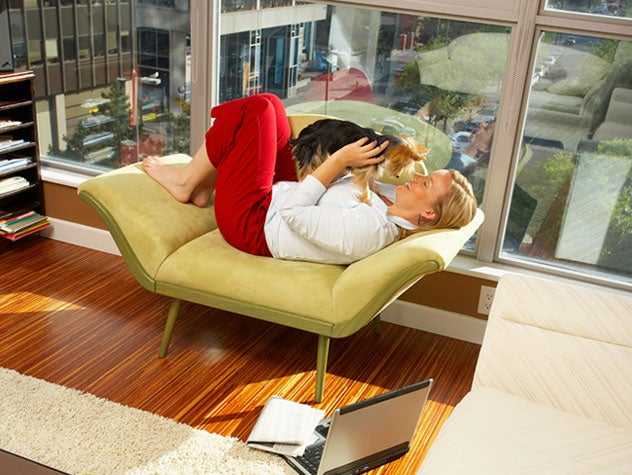How to Apartment-Train Your Dog

NICCOLE SCHRECK from RENT.COM
Living in an apartment with your dog poses a unique set of obstacles to overcome: the sounds of people passing by your door, other dogs in the building and potty training without a backyard. Despite this, 58% of pet-owning renters own a dog, according to a recent Rent.com survey. But don't worry—training your pup to live (and behave) in your apartment is entirely possible!
Foot Traffic
When you live in an apartment building, your neighbors are going to walk by your door, especially if you live near the lobby, elevator or other area with high foot traffic. If your dog is anything like my Chihuahua mix, foot traffic—particularly if that neighbor has a dog with them—is going to result in some barking. Train your dog not to bark at your neighbors with positive association. Ask a friend to help create positive reinforcement for not barking by having them pass by the door several times. When your friend walks by, tell your furry friend to “leave it” (or whichever similar command you use). Reward your dog with a treat only when they remain quiet during a pass. This exercise might need to be done for 10-15 minutes over the course of a few days in order for them to get the hang of it. Eventually your dog will understand that good behavior leads to tasty rewards and also become more comfortable with the apartment lifestyle.
Four-Legged Neighbors
If you’ve spent time socializing your dog, introducing your four-legged friend to other dogs in the building may not be an issue. However, dogs that get tense or anxious around other dogs may have a difficult time adjusting to apartment life. To make the process go as smoothly as possible, practice introducing your dog to other dogs in a neutral environment, like the local dog park. When dogs don’t feel the need to protect their territory, there is less chance of feeling threatened while they get to know (i.e. sniff) each other. Keep an eye on your dog’s body language—body stiffening, showing teeth or tucking their tail can all be signs that your dog is uncomfortable in the situation. It’s important to remember that introducing your dog to its four-legged neighbors can take some time and patience.
Potty Training
Chances are you don't want to come home to a puddle of pee on the floor each day. Potty training can be a bit more challenging when you live in an apartment with no backyard or doggie-door for your dog. One simple option is to train your dog to do its business on pee pads, which won't leak, so you don't need to worry about any messy cleanup. Designate one area of your apartment as the doggie bathroom so Fido knows exactly where to do his business each time. Make sure to place these pads far away from where your dog sleeps and eats. Crate training is another great way to train your dog and keep your furry friend comfortable while you're out of your apartment. A crate can emphasize good dog behavior by limiting access to the rest of your apartment. Because you want your pup to feel comfortable and safe in the crate, you should never use it as punishment. Instead, make the crate comfortable by placing a soft blanket or towel inside, and putting the crate in a common area, like the living room. An added benefit of crate training is that most adult dogs will not go to the bathroom in the same place where they sleep. So if you crate your dog during the day, he or she will most likely wait until you take them out to do their business. Keep in mind, though, that puppies have a fast metabolism and a small bladder, so they can only hold urination for a limited number of hours depending on their age. As a general rule, the age of the puppy in months, plus 1 equals the number of hours the puppy can hold his bladder. So, a 5-month-old puppy could hold it for six hours. If you will be gone for a longer period of time, you may want to ask a neighbor or friend to take your puppy outside while you are away. Niccole Schreck is a rental experience expert for Rent.com, a free rental site that helps you find an affordable pet-friendly apartment and provides tips on how to move with your pet. She is also the proud owner of two dogs, Bella and Wallace, and a cat named Frisby.